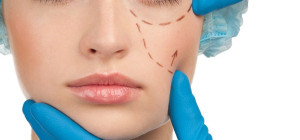 There is no denying that human Hair has had an evolutionary journey. It is intended to protect the skin and regulate body temperatures and assist with perspiration and evaporation. However, the obsession with our society with tresses has little to do anything with these functions. Hair and its presence and absence are generally about looks and youth aesthetics.
There is no denying that human Hair has had an evolutionary journey. It is intended to protect the skin and regulate body temperatures and assist with perspiration and evaporation. However, the obsession with our society with tresses has little to do anything with these functions. Hair and its presence and absence are generally about looks and youth aesthetics.
It doesn’t end here; it has a lot to do with the feeling of emotional wellbeing. Put simply, when it comes to improving your overall looks, full, voluminous, and thick hair is one of the priorities. Interestingly, people have been trying out plenty of methods to get rid of the hair loss problem. In this regard, laser devices are the latest hair treatment option to regrow healthier and thicker locks.
The FDA cleared process Low-Level Laser Therapy (LLLT) appeared to be not only effective but also safe to stimulate hair growth in males and females. Moreover, LLLT is painless, noninvasive, and, most importantly, has no side effects. This technology is used through devices known as laser caps, and are one of the best hair growth treatment methods available today.
LLLT devices come in several sizes and shapes and have a design that suits your lifestyle and addresses hair goals.
So how does this high-tech hair therapy work to help you regrow hair?
Below is everything you need to know about low-level laser therapy.
How Does Hair Low Laser Therapy Work?
The science behind low light laser therapy is simpler than you might have thought. LLLT is typically a visible red light from a cap/comb/headband shaped device. It works through photobiomodulation, which is not very different from plants drawing their energy from the sunlight.
The light penetrates the hair follicles – the pockets each hair strand grows out of, and transforms these photons into energy. The photons react with cytochrome C oxidase that leads to increased production of ATP (adenosine triphosphate). The cyclic AMP in follicles releases energy and stimulates metabolic processes, which are necessary for growing Hair.
Moreover, the process also releases nitric oxide from hair follicles that increase vascularization to the scalp, allowing it to distribute oxygen and nutrients to the hair roots. The process also stimulates blood circulation in the scalp by 54 to 55 percent and improves the nutrient intake of Hair that results in healthier growth and renewed functionality of follicles.
Keep in mind that it might take a few months (4 to 6) before you finally notice the results for most people. You may find it difficult to record or document your progress. According to Christine Shaver- hair restoration surgeon in New York, hair regrowth magic occurs under the scalp. Many mechanisms stimulate hair follicles and increase hair growth factors, higher energy amount, and improved blood flow in the hair cells.
That is why it is better to keep an eye on the quality and quantity of new hair. If you want to notice the difference in growth, the best way is to capture a close-up photo of your hair for the record. Snap another picture of the same section of hair after five months later (preferably the front hairline). Then, compare the difference.
However, it is vital to choose an LLLT brand that suits your needs the best.
Why Low Laser for Hair Restoration
As mentioned above, the advantages of LLLT for revitalizing hair growth are numerous. LLLT has become a raging trend for youthful glow, texture, and consistency in Hair. However, the feature that makes LLLT one of hair thinning’s best choices is that there is no cutting, scalpels, and cutting. The clinical-strength technology uses laser light to target the tissues to help them stimulate hair regrowth. Note that the light doesn’t heat the tissues, unlike traditional hair loss treatments.
The LLLT is referred to as a cold process. The low light wavelength of lasers repairs tissues that impair cellular metabolism. The process gently encourages bio stimulatory effects on the Hair follicles. LLLT is not one of those light sources that cause heat or thermal damage. Plus, the therapy doesn’t involve any burning or cutting sensation.
LLLT Side Effects
Side effects undeniably are the major concerns of many people regarding choosing a hair loss treatment. As mentioned earlier, low-level laser therapy is a “cool” or “neutral” temperature laser. That means it will not get hot and cause any side effects. There are no known side effects from using this treatment.
There are many different designs in LLLT, including headbands, combs, and full-coverage caps. Remember that each of these products contains different amounts of diodes (ranging from 9 to 272). It is the number of laser diodes that determine the time and efficacy required for the device.
In short, the LLLT device with the highest number of laser diodes will be more effective for stimulating hair regrowth.
Key Takeaway
In a nutshell, if you want to avoid and perhaps reverse hair thinning, you must consider low light laser treatment as a reliable option. All hair loss therapies and treatments come with their pros and cons. That is why you must weigh all the features when determining the right hair loss treatment for you.
Laser cap therapy thus is a trusted way to improve hair growth by amplifying the bodily functions. The process can accelerate the regenerating mechanism by shedding all useless cells, resulting in healthier hair follicles. However, it is always better to seek your dermatologist’s suggestions before opting for any hair loss treatment.







